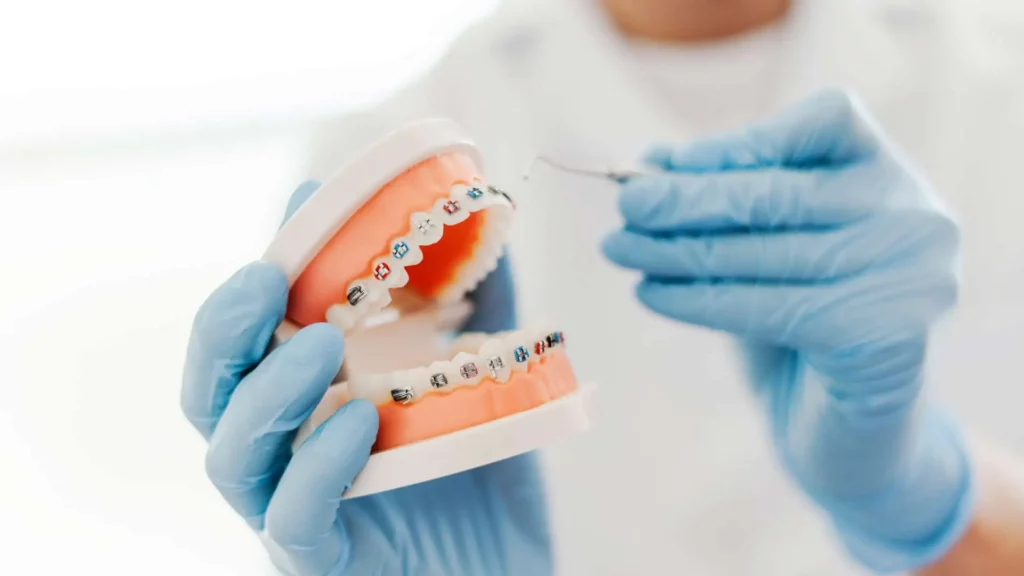Table of Contents
Braces improve health and appearance, boosting confidence. Yet, their cost worries many. The average cost of braces is between $5,000 and $6,000, as per the American Dental Association. This high price leaves many seeking affordable payment options.
Braces can be costly, causing financial stress for families. This is true whether for you or your child. It’s a significant investment. So, managing these costs is crucial. Luckily, there are various ways to reduce the cost of braces.
This guide will explore payment options for braces. It helps you save money and make better choices. With this information, you can get necessary care without overspending.
Cost of Braces in America
Braces prices are high. They depend on the procedure, location, and materials. In 2024, braces expenses in the US cost $3,500-$6,700. Normally, this covers the costs of the braces and check-ups.
Read: How to Pay for Dental Implants
Dental Insurance: Coverage and Benefits
Dental insurance covers braces expenses. It includes preventive, basic, and sometimes major procedures. Most plans fully cover check-ups, cleanings, and X-rays, or charge a small fee. This promotes oral health and prevents issues. Basic treatments, like fillings and root canals, are covered at 50%-80%. Major services, such as crowns and dentures, have limited coverage.
Braces and other orthodontic treatments often get partial coverage. However, they might need a separate plan. Some plans also have deductibles. It’s crucial to check policies for coverage details, waiting periods, and network restrictions.
Payment Plans and Financing Options
Many orthodontists offer payment plans for braces. These plans allow monthly payments. Here are some common options:
- In-House Financing: Many practices offer in-house plans. Patients can pay over months or years, often with little to no interest.
- Third-Party Financing: Options like CareCredit allow monthly payments. This is helpful for those without enough upfront funds. CareCredit offers interest-free options if paid within a specific period.
- Flexible Payment Plans: Some orthodontists provide customizable plans. These can adjust based on income or offer discounts for full upfront payments.
Using Health Savings Accounts (HSAs) and Flexible Spending Accounts (FSAs)
Both HSAs and FSAs are good options to pay your braces expenses. HSAs help those with high deductible plans to save pre-tax dollars toward medical expenses and procedures such as orthodontic care on braces. This lowers your taxable income and offers immediate tax benefits. Plus, HSA funds roll over each year.
FSAs, on the other hand, allow employees to set aside pre-tax salary for healthcare within a year. This is useful for families expecting braces. FSA includes coverage for co-pays, deductibles and other expenses related to braces.
Read related blog: Best Ways to Save on Dental Care
Grants and Low-Income Resources
Families in financial trouble can find help for braces through various organizations. Smiles Change Lives is a key program.
Also, local nonprofits and community groups provide aid for braces. They have programs beyond the national ones. These resources are especially for families in need, easing the cost burden. By looking into these grants and resources, families can effectively manage braces costs.
Discounted Services at Dental Schools
Dental schools offer cheaper orthodontic services. Dentistry students, guided by experienced teachers, provide these services. Although treatments may take longer, the savings are significant. Patients pay 30% to 50% less for braces than usual. This option suits those who can wait for treatment and are okay with students in charge.

Crowdfunding Your Orthodontic Treatment
Crowdfunding has become a popular means of paying for orthodontist services. GoFundMe is one such service that allows people to raise money to cover some expenses, including the cost of braces. Similar campaigns can be shared with family, friends, and even strangers while getting social media exposure. Even though this should not be seen as mainstream, it certainly does get the job done. Clearly explaining the need and costs can boost donations.
Budgeting and Saving Tips for Braces
Budgeting for braces is crucial. Here are some tips to save:
- Create a Plan: Find out the total cost and start saving. Consider a separate account for braces.
- Cut Costs: Review your spending. Find areas to reduce. Small savings add up.
- Start Early: The earlier you start, the better. Many treatments begin in the pre-teen years.
- Ask for Discounts: Inquire about discounts for full upfront payments or multiple family members. Some offer lower rates for cash.
How Beem Can Help You Manage Braces Expenses?
Braces can be expensive, but Beem makes it easier to manage costs. It offers instant cash advances for orthodontic treatments, so patients can start their braces journey without delay. This ensures timely care.
Moreover, Beem provides flexible repayment options. This helps users fit braces payments into their monthly budget. Patients can then focus on achieving a beautiful smile without financial stress. Download the Beem app here.
Conclusion
Getting braces might seem hard to pay for, but planning and using the right tools can help. It’s crucial to explore these and work with your orthodontist to find a plan that matches your budget and needs. With the right resources, a straighter smile is achievable. Check out Beem’s health insurance plans.
For immediate financial help, consider Beem. It offers fast cash for dental work, like braces, with no wait. With Beem, you can avoid high-interest loans or credit card debt. Try Beem and take advantage of its features for personal loans, health services, payments, etc.
FAQs on How to Pay for Braces
What is the average cost of braces in the US?
The average price for a brace is around $3,000 to $7,000. But it is not uniform. It depends on the type and location. Metal braces are usually cheaper. However, ceramic or lingual braces cost more.
Are there grants available for orthodontic treatment?
Yes! There are grants that help to pay the brace’s expenses. However, they vary by location and eligibility. Nonprofits and some dental schools might offer lower-cost treatment or aid. So, check local resources and talk to orthodontists about options to cover costs.
Can I use a Health Savings Account (HSA) to pay for braces?
Yes! HSA helps people pay their braces expenses. They are qualified medical expenses. HSA funds can cover orthodontic treatments, including braces, tax-free.






























